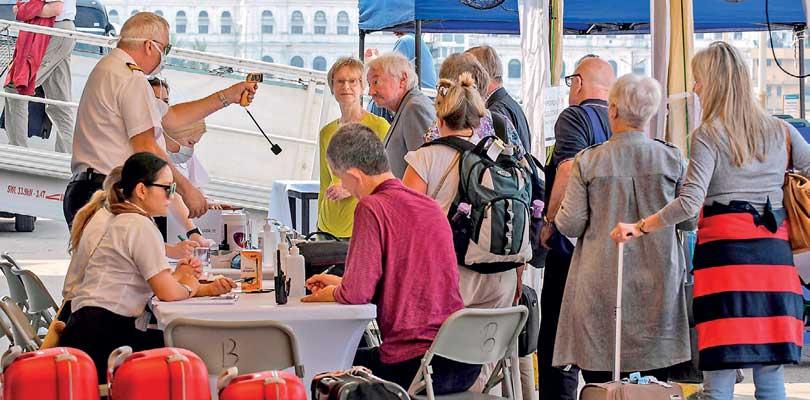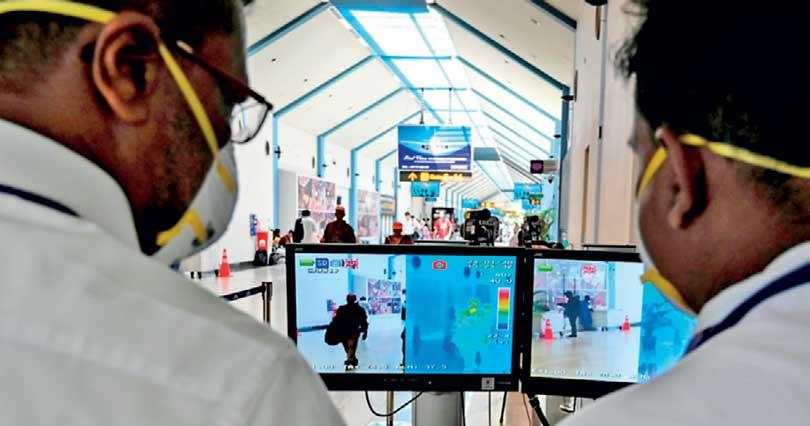 Overall global numbers lead WHO to suggest an overall fatality rate of 3.4%
Overall global numbers lead WHO to suggest an overall fatality rate of 3.4%
- Since fatality rates are higher in the elderly, these numbers would be higher in an older population like Italy and China
- What happened in Hubei and Italy is that hospitals ran out of ICU capacity
- The health ministry has around 570 ICU beds, located in 93 hospitals

A key question asked these days is how many people would die if we have a large COVID-19 outbreak?
Ro and fatality rates
Epidemiologists look at two numbers to assess how dangerous a contagious disease is. One is the number of people that an infected person would transmit the infection to – Ro or “R nought” to use the jargon. This tells us how infectious a disease is. Two is the percentage of infected people who would die: the case fatality rate (or mortality rate).
Both matter. How many people die is the multiple of how many people get infected and what percentage of patients die. The seasonal flu virus has a low fatality rate, but it is quite infectious. So each year millions of people contract the flu and hundreds of thousands die.
How infectious COVID-19 depends on many factors. For now, the key fact is that it is more infectious than flu. This means that if we do nothing, it could easily infect half the world’s population within a year.
Sri Lanka has an efficient public health sector
Current estimates of COVID-19 fatality
Instead, let’s focus on the fatality rate. Clearly, COVID-19 is more deadly than seasonal flu, which has a fatality rate of around 0.1%. But there is much debate on how much more. A lower level would make COVID-19 comparable to a bad flu season, but a higher level, say 5%, would resemble Spanish Flu in 1918–’19, which killed several millions around the world, including 50–300,000 Sri Lankans.
During the initial outbreak of COVID-19 in China, one in six patients (17%) died in Hubei province. Fatality rates then fell to under 5% in Hubei and to 0.7% in the rest of China. Overall global numbers lead WHO to suggest an overall fatality rate of 3.4%. This is 30 times more than seasonal flu, making COVID-19 a much more deadly disease. It’s also worth noting that the risk of dying is concentrated in the elderly, and very few children or young adults die.
Many people criticise the WHO estimate as being too high. There are three main arguments. I will examine each.
The first, often implied, is that the Chinese were just badly equipped, incompetent or even inhumane, so poor quality of care caused many deaths. The implication is that better quality systems, particularly in Western countries, will do better. Unfortunately, this idea has proven seriously wrong. In the current outbreak in Northern Italy, which is one of the most developed parts of Europe, the fatality rate has already reached 5%, higher than in China.
The second and a valid argument is that we can’t know now how many people would die until everyone recovers or dies. Fortunately researchers have looked at this. In a study led by my friend, Professor Gabriel Leung of Hong Kong University, they estimate that the fatality rate will be closer to 1.4% of those who develop symptoms.
That leads to the third argument. Many infectious diseases cause only mild or no symptoms. If infected people don’t feel sick or if the health system isn’t very good at identifying cases, the actual number of infections can be much higher than the reported numbers and the real fatality rate effectively lower. This certainly happens with COVID-19, and the problem is made worse by the fact that in most countries the statistics on actual cases depend on a positive test, and most countries are not testing enough people. In fact, WHO’s estimate of 3.4% is based only on reported cases. However, adjusting for this problem would still leave COVID-19 as a deadly epidemic. First, if we look at countries which have made the most effort to detect cases by aggressive testing, i.e., China and Korea, the reported fatality rate is still at least 0.6%, which is still much higher than normal flu. Second, some recent analyses of Wuhan’s epidemic suggest that only one in five cases were detected, which would still mean a fatality rate of 1%.
Considering all these issues, my best guess is that with good medical treatment case fatality in COVID-19 could be just under 1% of those who develop symptoms and ~0.2–0.5% of all infected people. Since fatality rates are higher in the elderly, these numbers would be higher in an older population like Italy and China, and lower in a younger population like Indonesia’s. This still means that COVID-19 is five to ten times more deadly than seasonal flu, and it could still kill millions worldwide within a year.
Life is never simple
Unfortunately, what I just suggested assumes good medical treatment. This is a very big “if”. Fatality rates in Hubei and now Italy have actually been much higher because a large surge of patients overwhelmed the capacity of the health system to cope. The reason is that around 15% of patients need ventilation to breath, and some of these need treatment in intensive care (ICUs), including in sometimes attachment to a heart-lung (ECMO) machine. If these patients don’t receive breathing support, they will die.
What happened in Hubei and Italy is that hospitals ran out of ICU capacity. Doctors then have to decide who gets support and who dies. Unpleasant as this sounds, this is currently happening in Italy and the UK NHS has drawn up plans for how doctors will decide who gets access to scare ventilation beds.
The bottom line is that how deadly COVID-19 is depends on how much ventilation and intensive care bed capacity the country has.
How much intensive care capacity do we have in Sri Lanka?
The health ministry has around 570 ICU beds, located in 93 hospitals. This includes only four beds at the Infectious Disease Hospital (IDH). This works out at 2.5 beds for every 100,000 people, which compares with over 12 in Italy and Europe as a whole, and 7 in the UK. MoH probably has additional capacity to provide respiratory support to patients outside the ICUs, but I don’t know how much.
In normal times, three out of four of these beds have patients with other diseases, so only around 150 beds are usually free. To manage this, our perpetually under-funded health ministry constantly juggles patients and beds. So in theory, we only have just over a hundred beds on most days. However, the challenge is even worse. The COVID-19 virus is so contagious that if you put a patient into a normal ICU, they will infect the other patients. This means that either the ICU needs to be able to isolate each patient - this requires special isolation rooms, or the whole ICU has to be given over to COVID-19 patients, and the other patients removed for their own safety.
Implications
My best guess is that if COVID-19 cases jumps to around a thousand – which it could do in just a couple of weeks if we have widespread transmission, then our current ICU capacity will not be enough to keep the fatality rate below 1%.
I hope that the government is working day and night to prepare for the worst case scenario, but these are what I would recommend:
1. Buy time by maximizing efforts to prevent travellers importing the virus and minimising local transmission.
2. Identify ICUs to dedicate to COVID patients, and look at all options to expand existing units and establish new temporary ICUs when needed.
3. Curtail services, such as heart surgery, that create demand for ICU beds.
4. Investigate alternative options to provide breathing support for non-serious cases, including at home.
5. Urgently import additional equipment and work out alternative arrangements to produce critical equipment in the country (for example Italy has mobilised its army to help producers of ventilation equipment).
One final point. All Sri Lankans should understand that we have a really efficient public health sector. But efficiency is not enough. Sri Lanka doesn’t invest enough money in health, and so when crises like this happen, the system might not be able to cope. I very much hope that health ministry leaders use this opportunity not only to secure emergency funding, but also make the case for increasing the regular MoH budget.
Dr Ravi P. Rannan-Eliya is Executive Director of the Institute for Health Policy. He trained as a physician at Cambridge, and in public health and economics at Harvard. The views and opinions expressed in this article are his personal views, more of which can be found at his blog site – “Personal comment” at ttp://www.ihp.lk/blogs/ravi.
Email if needed is
 Overall global numbers lead WHO to suggest an overall fatality rate of 3.4%
Overall global numbers lead WHO to suggest an overall fatality rate of 3.4% A key question asked these days is how many people would die if we have a large COVID-19 outbreak?
A key question asked these days is how many people would die if we have a large COVID-19 outbreak?